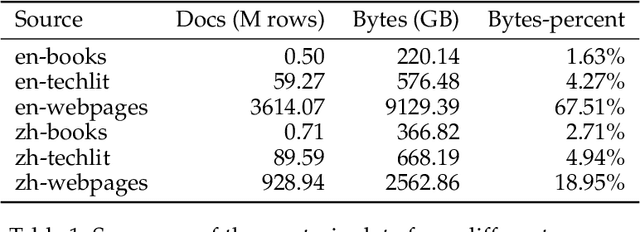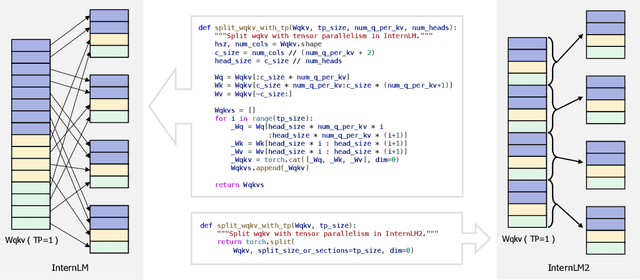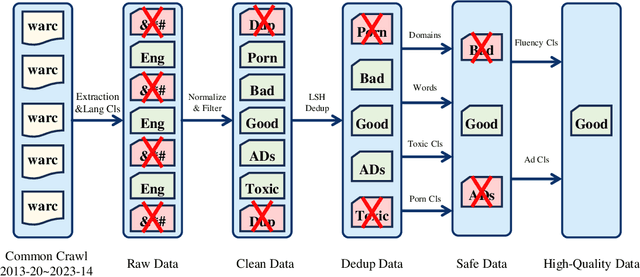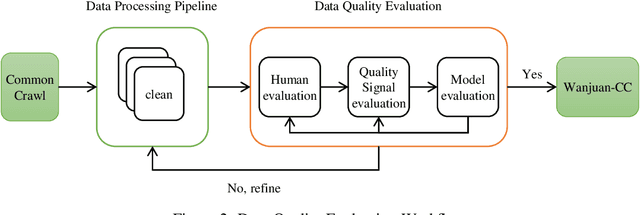Jia Yu
Robust Polyp Detection and Diagnosis through Compositional Prompt-Guided Diffusion Models
Feb 25, 2025Abstract:Colorectal cancer (CRC) is a significant global health concern, and early detection through screening plays a critical role in reducing mortality. While deep learning models have shown promise in improving polyp detection, classification, and segmentation, their generalization across diverse clinical environments, particularly with out-of-distribution (OOD) data, remains a challenge. Multi-center datasets like PolypGen have been developed to address these issues, but their collection is costly and time-consuming. Traditional data augmentation techniques provide limited variability, failing to capture the complexity of medical images. Diffusion models have emerged as a promising solution for generating synthetic polyp images, but the image generation process in current models mainly relies on segmentation masks as the condition, limiting their ability to capture the full clinical context. To overcome these limitations, we propose a Progressive Spectrum Diffusion Model (PSDM) that integrates diverse clinical annotations-such as segmentation masks, bounding boxes, and colonoscopy reports-by transforming them into compositional prompts. These prompts are organized into coarse and fine components, allowing the model to capture both broad spatial structures and fine details, generating clinically accurate synthetic images. By augmenting training data with PSDM-generated samples, our model significantly improves polyp detection, classification, and segmentation. For instance, on the PolypGen dataset, PSDM increases the F1 score by 2.12% and the mean average precision by 3.09%, demonstrating superior performance in OOD scenarios and enhanced generalization.
WanJuanSiLu: A High-Quality Open-Source Webtext Dataset for Low-Resource Languages
Jan 24, 2025



Abstract:This paper introduces the open-source dataset WanJuanSiLu, designed to provide high-quality training corpora for low-resource languages, thereby advancing the research and development of multilingual models. To achieve this, we have developed a systematic data processing framework tailored for low-resource languages. This framework encompasses key stages such as data extraction, corpus cleaning, content deduplication, security filtering, quality evaluation, and theme classification. Through the implementation of this framework, we have significantly improved both the quality and security of the dataset, while maintaining its linguistic diversity. As of now, data for all five languages have been fully open-sourced. The dataset can be accessed at https://opendatalab.com/applyMultilingualCorpus, and GitHub repository is available at https://github.com/opendatalab/WanJuan3.0
UIE-UnFold: Deep Unfolding Network with Color Priors and Vision Transformer for Underwater Image Enhancement
Aug 20, 2024



Abstract:Underwater image enhancement (UIE) plays a crucial role in various marine applications, but it remains challenging due to the complex underwater environment. Current learning-based approaches frequently lack explicit incorporation of prior knowledge about the physical processes involved in underwater image formation, resulting in limited optimization despite their impressive enhancement results. This paper proposes a novel deep unfolding network (DUN) for UIE that integrates color priors and inter-stage feature transformation to improve enhancement performance. The proposed DUN model combines the iterative optimization and reliability of model-based methods with the flexibility and representational power of deep learning, offering a more explainable and stable solution compared to existing learning-based UIE approaches. The proposed model consists of three key components: a Color Prior Guidance Block (CPGB) that establishes a mapping between color channels of degraded and original images, a Nonlinear Activation Gradient Descent Module (NAGDM) that simulates the underwater image degradation process, and an Inter Stage Feature Transformer (ISF-Former) that facilitates feature exchange between different network stages. By explicitly incorporating color priors and modeling the physical characteristics of underwater image formation, the proposed DUN model achieves more accurate and reliable enhancement results. Extensive experiments on multiple underwater image datasets demonstrate the superiority of the proposed model over state-of-the-art methods in both quantitative and qualitative evaluations. The proposed DUN-based approach offers a promising solution for UIE, enabling more accurate and reliable scientific analysis in marine research. The code is available at https://github.com/CXH-Research/UIE-UnFold.
Unveiling the Impact of Multi-Modal Interactions on User Engagement: A Comprehensive Evaluation in AI-driven Conversations
Jun 21, 2024Abstract:Large Language Models (LLMs) have significantly advanced user-bot interactions, enabling more complex and coherent dialogues. However, the prevalent text-only modality might not fully exploit the potential for effective user engagement. This paper explores the impact of multi-modal interactions, which incorporate images and audio alongside text, on user engagement in chatbot conversations. We conduct a comprehensive analysis using a diverse set of chatbots and real-user interaction data, employing metrics such as retention rate and conversation length to evaluate user engagement. Our findings reveal a significant enhancement in user engagement with multi-modal interactions compared to text-only dialogues. Notably, the incorporation of a third modality significantly amplifies engagement beyond the benefits observed with just two modalities. These results suggest that multi-modal interactions optimize cognitive processing and facilitate richer information comprehension. This study underscores the importance of multi-modality in chatbot design, offering valuable insights for creating more engaging and immersive AI communication experiences and informing the broader AI community about the benefits of multi-modal interactions in enhancing user engagement.
InternLM2 Technical Report
Mar 26, 2024



Abstract:The evolution of Large Language Models (LLMs) like ChatGPT and GPT-4 has sparked discussions on the advent of Artificial General Intelligence (AGI). However, replicating such advancements in open-source models has been challenging. This paper introduces InternLM2, an open-source LLM that outperforms its predecessors in comprehensive evaluations across 6 dimensions and 30 benchmarks, long-context modeling, and open-ended subjective evaluations through innovative pre-training and optimization techniques. The pre-training process of InternLM2 is meticulously detailed, highlighting the preparation of diverse data types including text, code, and long-context data. InternLM2 efficiently captures long-term dependencies, initially trained on 4k tokens before advancing to 32k tokens in pre-training and fine-tuning stages, exhibiting remarkable performance on the 200k ``Needle-in-a-Haystack" test. InternLM2 is further aligned using Supervised Fine-Tuning (SFT) and a novel Conditional Online Reinforcement Learning from Human Feedback (COOL RLHF) strategy that addresses conflicting human preferences and reward hacking. By releasing InternLM2 models in different training stages and model sizes, we provide the community with insights into the model's evolution.
WanJuan-CC: A Safe and High-Quality Open-sourced English Webtext Dataset
Mar 12, 2024



Abstract:This paper presents WanJuan-CC, a safe and high-quality open-sourced English webtext dataset derived from Common Crawl data. The study addresses the challenges of constructing large-scale pre-training datasets for language models, which require vast amounts of high-quality data. A comprehensive process was designed to handle Common Crawl data, including extraction, heuristic rule filtering, fuzzy deduplication, content safety filtering, and data quality filtering. From approximately 68 billion original English documents, we obtained 2.22T Tokens of safe data and selected 1.0T Tokens of high-quality data as part of WanJuan-CC. We have open-sourced 100B Tokens from this dataset. The paper also provides statistical information related to data quality, enabling users to select appropriate data according to their needs. To evaluate the quality and utility of the dataset, we trained 1B-parameter and 3B-parameter models using WanJuan-CC and another dataset, RefinedWeb. Results show that WanJuan-CC performs better on validation datasets and downstream tasks.
Unveiling the Secrets of Engaging Conversations: Factors that Keep Users Hooked on Role-Playing Dialog Agents
Feb 18, 2024



Abstract:With the growing humanlike nature of dialog agents, people are now engaging in extended conversations that can stretch from brief moments to substantial periods of time. Understanding the factors that contribute to sustaining these interactions is crucial, yet existing studies primarily focusing on short-term simulations that rarely explore such prolonged and real conversations. In this paper, we investigate the factors influencing retention rates in real interactions with roleplaying models. By analyzing a large dataset of interactions between real users and thousands of characters, we systematically examine multiple factors and assess their impact on user retention rate. Surprisingly, we find that the degree to which the bot embodies the roles it plays has limited influence on retention rates, while the length of each turn it speaks significantly affects retention rates. This study sheds light on the critical aspects of user engagement with role-playing models and provides valuable insights for future improvements in the development of large language models for role-playing purposes.
Quality and Quantity: Unveiling a Million High-Quality Images for Text-to-Image Synthesis in Fashion Design
Nov 29, 2023Abstract:The fusion of AI and fashion design has emerged as a promising research area. However, the lack of extensive, interrelated data on clothing and try-on stages has hindered the full potential of AI in this domain. Addressing this, we present the Fashion-Diffusion dataset, a product of multiple years' rigorous effort. This dataset, the first of its kind, comprises over a million high-quality fashion images, paired with detailed text descriptions. Sourced from a diverse range of geographical locations and cultural backgrounds, the dataset encapsulates global fashion trends. The images have been meticulously annotated with fine-grained attributes related to clothing and humans, simplifying the fashion design process into a Text-to-Image (T2I) task. The Fashion-Diffusion dataset not only provides high-quality text-image pairs and diverse human-garment pairs but also serves as a large-scale resource about humans, thereby facilitating research in T2I generation. Moreover, to foster standardization in the T2I-based fashion design field, we propose a new benchmark comprising multiple datasets for evaluating the performance of fashion design models. This work represents a significant leap forward in the realm of AI-driven fashion design, setting a new standard for future research in this field.
 Add to Chrome
Add to Chrome Add to Firefox
Add to Firefox Add to Edge
Add to Edge